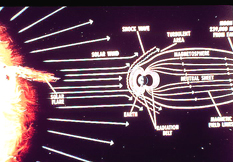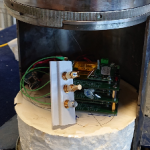SBAS and RNSS: The Unsung Heroes of GNSS
Okay, if I had wanted to pander to GNSS fans, I might have called this, “Making Great Greater.”
But there are only so many superlatives that can be lathered on this remarkable technology before simple praise turns into hagiography.
So, it’s time once more to give a little love to those unsung heroes of GNSS: the augmentations and regional navigation satellite systems.
In my comments, I usually try to avoid beating a drum for the contents of the current issue of our magazine. But the serendipitous convergence of articles in the following pages argues for an exception.
And, here it is.
GAGAN is the fourth satellite-based augmentation system (SBAS) to go live — after the U.S. Wide Area Augmentation System (WAAS), the European Geostationary Navigation Overlay Service (EGNOS), and Japan’s MTSAT Satellite Augmentation System (MSAS). In this issue, authors from the Indian Space Research Organization (ISRO) and the Airports Authority of India — the primary instigators and benefactors of GAGAN — celebrate their accomplishment and explain how it is “redefining” navigation in the Indian region.
Another ISRO engineering team, against the backdrop of the Indian Regional Navigation Satellite System (IRNSS), describe their efforts to map the time delays in a navigation payload to improve the ranging accuracy of satellites.
Finally, this issue’s Working Papers column presents some novel ideas aimed at improving the performance of timing systems in future generations of SBAS
Similar ground- and satellite-based GNSS augmentations are also under development in Russia and China. Moreover, the emergence of a multiverse of GNSS, with four independent yet interoperable systems, can itself be considered an augmentation, adding diverse signals, frequencies, and sources to an aggregate capability.
Those, of course, are just the governmental contributions. Commercial services, also mainly satellite-based, bring even higher levels of accuracy and resilience for demanding applications around the world.
Casting the definition of augmentation even more widely, we also encounter the products of the International GNSS Service (IGS) and regional, real-time geodetic networks, as well as augmented GNSS-specific techniques as real-time kinematic (RTK), assisted GNSS, and precise point positioning.
By extension, of course, we can add the other PNT technologies that are making GNSS more robust, accurate, flexible, and/or durable: such things as inertial navigation, chip-scale atomic clocks, WiFi and other RF resources and techniques, camera vision and optical sensors, magnetic anomaly navigation, and so on.
Rather than highlighting the inadequacies and vulnerabilities of GNSS, however, these wide-ranging efforts to augment, supplement, and improve on it actually underline the centrality of space-based systems for modern PNT capabilities.
Rarely, if ever, do we hear advocates and experts with such systems assert the primacy of those technologies or propose that they could take the place of the global, generally accessible, affordable, and unprecedented accuracy provided by GNSS.
The backers of enhanced Loran (eLoran) are not seeking to bring back a World War II era system as a stand-alone multi-modal rival to GNSS. They are seeking a backstop, a basic capability to carry PNT users — particularly in the precise time and synchronization domain — through periods of operational conditions or in environments in which GNSS cannot provide the level of assurance and performance that certain critical applications require.
Even with all of these useful enhancements and endeavors — singly or together — public officials can’t duck their obligation to sustain, modernize, and defend the core GNSS systems, even as they work to ensure overall PNT availability through robust and cost-effective augmentation.






